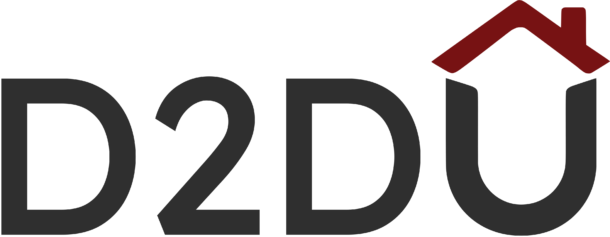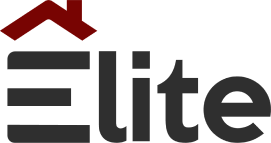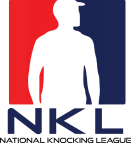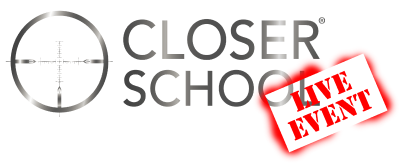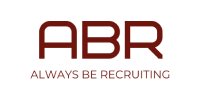Speaker 1: (00:02)
Bill, Can I help you?
Speaker2: Hey listen up, I’m bringing you the best content to ever exist in the door to door industry from sales leadership, recruiting, impersonal development.
Speaker 1:
Why would I need that?
Speaker 2:
Because never before have we been able to collaborate with the top experts in their industries, sharing their secrets and techniques and what makes them the best.
Speaker 1: Wait, who? Who are you?
Speaker 2:
I’m your host. Sam Taggart, creator of the D2D experts in D2Dcon. Is there a place we can sit down?
Speaker 1:
Well come on in.
Speaker 3: Vanilla is the fastest way to increase your Google and Facebook reviews through text with a 98% open rate. Vanilla reviews is the simplest cheapest way to interact and engage with customers. Visit us at vanillagood.com for more information.
Speaker 2: (00:48)
Speaker 3: (00:48)
This is Sam Taggart with Chad Sanderson, and this podcast is going to be awesome. He comes from a different world and he’s has 20 years of sales experience and now works for a companies and managing partner of a company called Value Selling.
Um, and they help their, their associates. They go around and they basically train and consult companies on how to put together better sales training processes, better sales systems, how to have better conversations in today’s world of selling.
So welcome to the show, Chad. I appreciate you having it, you know, taking your time out of your busy day to, to be on here. I mean, it’s a, it’s an honor.
Speaker 4: (01:31)
Excited to be here. What do they say? Long time listener. First time caller. I just listen, I’ve been listening to you for a while, so it’s, yeah, it’s great to be on the show. Thank you for having me on.
Speaker 3: (01:41)
Appreciate you taking the time. So let’s dive into a little bit about you. And the thing that got me interested was I got my, I cut my teeth and started in Cutco. We actually have co people that listened to this and um, you know, can I tell us how you got recruited into direct sales and how that kind of sparked the sales cocaine addict? Yeah. To develop into now the sales expert. Um, but you know, kind of tell us a little like first story. Your first interesting story is, hey, I jumped into this Cutco world.
Speaker 4: (02:12)
Yeah. And this’ll be the first place. I mean, I, you know, I do, I do a lot of these things, but this would be the first place I’ve actually told this story. So this is an exclusive for your audience. I actually, you know, I was in college and everybody probably knows the story. I’m trying to figure out how I’m gonna pay for college and I got to find a job that’s flexible so I can get my class load and stuff. And I actually was, uh, I was the editor for the campus paper and I’d written something. I honestly to this day, don’t even remember what it was, but somebody who was recruiting for Cutco reddit and said, you know what? Your perspective lends itself to sales. You should come sit through one of our little seminars. And I was like, okay, what the hell they’re going to have. I think they were having free food as a college student and starving
Speaker 3: (02:49)
props to props to the recruiter in that setting. I mean, just to be that aware and open his mouth like, you know what I mean? There’s a lesson right there in and of itself.
Speaker 4: (02:57)
Oh absolutely. And so I go in and, and they’re, you know, anybody who’s seen her, I mean, I personally own Cutco knives cause they’re amazing. But at the time I didn’t know what the hell it was and there was something that the trainers said that kind of flipped the switch for me, which was, you know, he asked, hey, how many of you think $100 is a lot of money in here? And we’re all college students, so we’re all raising our hands. You know, maybe in the back of our heads we thought maybe he’s going to hand somebody a hundred bucks, but we’re all, everybody’s got their hands up. And he says, okay, well a hundred dollars is not the same to the people we want you to sell to $100 to the people you’re about to go talk to. It’s more like $10 to you. So you had, so that subtle shift of, Hey, I’m not, you know, it’s not as big of an investment because I’m not looking at it from their perspective. That started to lay the groundwork for me for what has become an extremely, uh, I’m extremely grateful for. And, and successful sales career. It was that shift to understand that that other person’s perspective and then the grind, right? Anybody who’s sold Cutco door door, now it’s at farmer’s markets and wherever it’s a grind. I mean, how many times do you have to go to that stuff but stopping, here’s a penny, watch what I can do with these scissors.
Speaker 4: (04:16)
And so it’s, it’s a, it was a great lesson that served me very well and we came to a foundation for kind of how I’ve ended up where I’m at. That is awesome. So then fast forward, what some of the funnest things you sold or favorite items you sold, where have you kind of gotten the most joy in your sales path? Oh, that is a great question. So it’s interesting. I would say I’ve sold everything from product, a physical product, a software product to SAS to consulting services. So I would say the one that was the most interesting to me was actually selling 3d geometric modeling libraries for software. So I no let that sink in. It sounds extreme like hold on.
Speaker 4: (04:57)
So meaning you model like a car or like a basketball hoop? Absolutely. Any manufactured surface. So inside of the the software packages that do that, that people would have heard of come from solid works or autodesk companies like just carve it out of clay anymore. And inside that, inside that that software inside autodesk software, inside the social system, software t or whatever, there is a three d geometric modeling engine that allows that software to operate and understand three dimensional space and contains all the math necessary to make sure a surface is truly manufacturable rather than just something that can’t be done in a machining environment. And so that product had no user interface. I am not a math guy at all. Like at not even remotely, but understanding I can do percentages and commission this. If you get somebody that’s like super amped about three d modeling software, these
Speaker 3: (05:58)
probably not the sales guy you want.
Speaker 4: (06:01)
Exactly. Cause it’s not about nobody. Nobody wakes up in the morning and says, Hey I wanna 3d geometric modeling engine today. No. Would they do say, hey I have, I have the new a wireless charging stand for a pixel or an iPhone. I need to get manufactured. I need to get the cad model over to, I need the surface to be continuous. I needed to meet all the criteria tolerances have. That’s what they’re thinking about. They’re not thinking about the underlying math, but if the underlying math isn’t there, they’re not getting their jobs done. So they’re thinking about the outcomes. So that was a great, that was a great challenge for me to find ways to take that product, which was typically embedded in software. And I actually was able to sell it into manufacturing environments. So companies that were at the time doing to, to degree or to, um, dimensional machining, say water jet cutting on a piece of titanium to then embed this in their, in their hardware so that they could then cut in three dimensions, right?
Speaker 4: (06:55)
And it opens up a whole new business opportunity. So that was, that was awesome. I had a great deal of fun doing that. And then the last 10 years was all about, um, building digital ecosystems. So everything from Ebay’s first mobile app, we sold that deal to Halos, third screen experience. Uh, we developed that to, uh, working with the Minnesota Vikings on fan experience. So that was fun because those challenges were never ending and it was always about how do you merge the physical and the digital to drive an experience that is going to provide value to someone you’re never going to speak with.
Speaker 3: (07:29)
That is awesome. I mean, some of these guys probably listening to this are like, man, I’m just still selling Cutco. So I have buddies that make a killing and Cutco and it’s a great product, but it’s kind of like your journey of sales took you on an interesting path, which I think a lot of people stop. They don’t ever take time to stop and think like by building this art and this, this, this skillset, it’s so transferrable. Because I bet you, and correct me if I’m wrong, you probably use some of the same skillsets that you learn in cut Co’s training program later on and some of these other sales jobs and absolutely,
Speaker 4: (08:10)
absolutely. It’s a fun the sales skill set. And it’s funny cause everybody talks about, oh, AI is gonna wipe out the sales professional robot. It’s actually, I don’t know that I necessarily agree. It’ll change it. What I’m seeing though is it makes our ability to consistently relate to another human being extremely valuable. Now this goes, you know, we’re not talking smarmy, slimy car salesman type stuff, but genuine curiosity, genuine connection, genuinely wanting to understand another person’s, what is your view of the problem? I don’t want to tell you what it is to tell you, like you, you know, you work in this company a hell of a lot longer than I did. I’ve done some research. So talk to me, let’s have a conversation because I’ve got some expertise. You’ve got some expertise, let’s put that together to achieve some outcomes. That alone neither one of us would be able to touch. And I love authentic connection that authentic communication is becoming more valuable today. And it is something that no one, um, I, I have not seen anywhere where people are explicitly getting trained on how to do that in a consistent manner.
Speaker 3: (09:09)
Yeah, no, and that’s kind of what I want to dive into today is on this podcast, if you’re listening, like really where we want to take this is simply how to have more effective conversations in today’s selling world and how to really connect on a different way. You know, I think that through technology and being able to hop on her phone real quick, like how many times are you buying something and you’re like right before you’re sitting there in front of the sales guy, you know, like hold on two seconds and you Google it just to make sure that you do like 10 years ago, nobody did that today. It’s like, hold on, let me shop in front of you on my phone before you close me. Like, I mean, it’s just different, you know, bringing this digital and face to face world together, I think that you just have to have a different level of connection, a different level of conversation that, um, had you have to adapt. And you know, I’ve been in it for 18 years now and it’s like all I’ve done and I’ve seen shifts and things like that as well. So, um, but let’s, let’s dive into this. So effective ways to really make your conversations more powerful or, you know what I mean? Like what, what, what advice would you give us?
Speaker 4: (10:19)
So you know it’s interesting thing about it when when we work with companies and we work with the sales teams and we say to him, I say right up front, I’m not going to ask anybody to do anything you’re not already doing. Cause everybody in the world has conversations, right? We all have conversations. We have conversations with our friends, with our family, we have conversations with prospects, with customers, interviews, right? We all exchange is in one way or another, some type of communication. We’re doing it every day. The question becomes how many times have you caught yourself in a situation where you’re having a conversation and maybe you’re 80% paying attention to it. Maybe you glance down at your phone, which is context switching. Don’t even get me started on multitasking. Is context switching. How do you know? What does that do to your ability to focus on another human being? So what we want is we want to be more consciously competent. We want to be aware and more present in those conversations and we want to make sure we have a predictable framework for having and managing those conversations to get to one end goal, which is what is the person we’re talking to? What is their perception of their problems, their ideal solution and their perception of value.
Speaker 3: (11:28)
Yeah, yeah. The keyword in there, there.
Speaker 4: (11:31)
Yeah, it’s absolutely, it’s absolutely them. Now most organizations, and to some extent even, you know the Cutco guys did this, we talked about as we were warming up, you see organizations, global organizations that are onboarding sales reps of, of any ilk consistently. What are they doing? They’re telling them about the product, they’re telling them, hey look, my Cutco scissors will cut a penny. Or Hey my sass product, these different types of features and functions, we inundate them with these, with these product features. So is it any wonder when we unleashed them on the world, that’s what they want to talk about. And so it’s, it’s a problem of its, of its own making of some extent in the changing environment in which we work. The fact of the matter is if we can teach them to take not just what it is those products or solutions or services do, but understand the outcomes they can produce.
Speaker 4: (12:19)
And by talking to another human being and getting their perspective talk about what outcomes they want to see, connect their view of the problems to the outcomes we can produce and ideally outcomes only we can produce. So what are our differentiators and what really drives the unique outcomes we can bring to the table? And then how would they quantify the impact of that to the organization? Yeah, think that really the best and only, I mean the real way to do that is just knowing how to effectively show humility and ask the right questions. So I guess what question, like how do you get them? Because here’s the problem. I think a lot of consumers, they struggle at really opening up, I mean no customer like ready to get to that shopping or you know, you’re demoing or whatever. They’re not like, oh yeah, I really have crappy knives.
Speaker 4: (13:10)
I’ve been looking at like, I mean, they’re not like here, here’s all my hotspots like here, like sell me like, you know what I mean? So I think a lot of people, you know, the ability of a good salesman I look at is the ability to figure out their problem, their perspective, how they’re viewing the situation and the problems. And I guess what are some hacks on getting to the deep core of that? You know what I mean? Like it’s very simple. Again, we’re going to try it. So we want to, we want to be able to ask the questions, but we don’t want to be haphazard about it. So we use, we use a tool called a value prompter and it’s designed to, um, I’ll, I’ll send you a screenshot of it so you can put in the show notes are designed to give you a mental map of where the conversation should go.
Speaker 4: (13:55)
It’s very easy. You’re adding, again, already doing it. The key is that we teach people how to use open, very carefully crafted probing questions and confirming questions to uncover that other individual’s perspective. Even if they may or may not be aware of it. So I’ll give you an example. If, if Tacos now their perspective, cause I don’t think they just are doing exactly even take time to then and then something super important if you’re listening to this, it’s like guys like you have to realize some customers don’t even see problems and they, and they have never even taken time to see that their knee hurts. And all of a sudden you’re like, hey did you notice your knee hurts? And all of a sudden they think about it and like, oh freak, my knee hurts. And it’s like living with a hurt knee and don’t even realize it.
Speaker 4: (14:38)
And I’m just using that as an analogy. But I think what you said right there is important that people realize that it’s like helping them even see their problem. You know what I mean? The right way. And the reality is because of all of the and information that we take in on a daily basis, like just think about anybody listening. How many emails did you get today? Slack messages, linkedin messages or notifications. How many things did you get on whatsapp? Whatever you’re on, how many digital distractions plus whatever television shows you what they think about all that information. Well, what’s happening is our brains are actually compensating for the input and there’s an exercise we do in class that that helps people understand that sometimes they’re not even aware. Even when I asked them to be aware, they’re not aware of how their brain is compensating with the data search, so we have to be truly, truly aware of what we’re doing.
Speaker 4: (15:28)
Now, if we have to work that hard to focus, I guarantee the people you’re talking to, you have to work twice as hard because they’re not even going to be aware that they have a challenge. So going through that open probe and confirm questioning approach inside of this value prompter, we’re actually giving them a sandbox where they can think about their problems actually focus. It’s actually designed to help them focus without them really knowing it. And it can be, once you get it down, once you’ve practiced it, it’s just a very casual conversation. But we stay on point. We stay on purpose. We stay focused on managing the conversation through asking those questions, providing insights and challenging their thinking with questions rather than statements in order to uncover and help them uncover what are the problems we’re trying to solve and what do they ideally want in a solution. And how will they quantify the impact to the business and to themselves.
Speaker 3: (16:20)
I love this. I love where you’re going at this. Um, and, and for those that are listening, I’ll put a link to his website or the image of this whole value prompter just so you guys can download it or see it. But, um, I guess, I guess would you be open to almost as role playing together and just being like, hey, here’s an example of what this could look like in a very simple format. You know what I mean? You kind of this open question, probe question confirming question, you know, let’s just say let’s use Cutco knives just cause we’re on that, that, that thread. Um,
Speaker 4: (16:55)
so we did it. We can do it with Cutco or we can do it. We could do it with d to d,
Speaker 3: (16:59)
do the ID or whatever. Yeah, let’s do it. Hey, let’s do what the DDD con ticket in January and you’re selling me. I am the hesitant, I don’t know if I should go to this event. Um, you know, kind of walk me through this framework.
Speaker 4: (17:14)
Okay. So really it really is this simple and, and you know, you’ll, there’ll be some pleasantries and some, you know, some, uh, just, you know, as you’re walking to the table for the meeting or you first get it on the call, right? All that stuff. So you get to a point though where you’re just like, so Sam, just do me a favor. I did some research on kind of what you guys are trying to accomplish, but I really would love to understand what’s the number one thing you’re focused on right now?
Speaker 3: (17:36)
Ooh, so good. You know, my mission is to uplevel and unify the door door space and bring some honor and integrity and a better name to it. Give some swagger back to DDT.
Speaker 4: (17:46)
I love it. And I, just out of curiosity, I mean, you know, I’ve been in this game a while too, and I can, I think I can assume some of the challenges that you’re facing, but what problems are getting in the way? What are the biggest challenges you’re seeing getting in the way of achieving that?
Speaker 5: (18:00)
Um,
Speaker 3: (18:00)
I just think a lot of people are still hesitant to collaborate. They’re still like a win lose, you know, they don’t want to play the win-win game with other companies and bring their reps to it and they don’t want to, you know, necessarily,
Speaker 5: (18:14)
um,
Speaker 3: (18:15)
you know, open up their sales teams to exposure other industries and stuff like that. So I think people are just hesitant.
Speaker 4: (18:21)
Have you struggled with gaining the attention of, of either the individuals you’re selling to or maybe even the attention of the individuals you work with? Yeah, yeah. It’s a challenge. It’s a challenge on a regular basis. Any other challenges that you might be having a along those lines, getting into the accounts that you want to or things that might be keeping you from fulfilling that mission?
Speaker 5: (18:42)
Um, well, I,
Speaker 3: (18:47)
yeah, I just think like people
Speaker 5: (18:50)
Speaker 3: (18:50)
really taking the time to invest in themselves and grow and develop and, you know, they’re just kind of, ears are sawing. They don’t ever take the time to sharpen the saw.
Speaker 4: (19:01)
I love that. Okay. So as, as you think about how you’re going to solve this problem, you know, we address these problems of getting people’s attention and fulfilling that mission. Obviously you want to see if there are ways that you can get people to, um, you know, focused on themselves, their self-improvement. What other elements do you think of when you, when you think of an ideal solution that’s gonna allow you to solve those problems associated with gaining the attention and the respect and the focus from other individuals to fulfill your mission? What other elements would be important to you in an ideal solution?
Speaker 3: (19:31)
Carol Enterprise here, that question I thought was very crafted.
Speaker 4: (19:34)
D
Speaker 3: (19:37)
describe why. Okay. No, no, no, but think about it. And I don’t think anybody would have captured that. Right?
Speaker 4: (19:43)
You’re paying very close attention to what should naturally be just, it’s just a natural conversation
Speaker 3: (19:48)
and natural conversation. But I’m taking it apart cause we’re trying, we’re training, right? You learn what did you do intentionally in that question. But I think a lot of people wouldn’t pick up.
Speaker 4: (19:59)
So what I did was I intentionally asked you, what do you believe the solution should entail to solve the problems you just told me that exist and are keeping you from achieving your mission. So I need
Speaker 3: (20:12)
you can plug in your widget, plug in the product and problem they told you. And that question right there is very powerful. I agree
Speaker 4: (20:20)
like that. Absolutely. And keep going. Sorry. Yeah, no, I mean that. And then it just, let’s just say you said, you know, let’s just say you wanted something that was, you know, multi-platform that they could access online that it allowed them to talk to. So then, then when we get to the end of that kind of that solution discussion, I’d say, so let’s say, I just want to make sure I’m following here. So help me, help me make sure I’m not missing anything. What you’re telling me you’re looking for is a solution that has multiple touch points that can be accessed online that allows them to have access to coaches and expertise such as yourself and you believe those elements are going to help you capture the attention of the individuals, help you get the focus of those customers, solve those problems that we had talked about and really ultimately fulfill that mission that you had stated. Is that, do I have it remote? Right? And so right there, that’s what we call in our parlance, that’s what we call a differentiated vision match. Meaning I asked you probing questions around your problems that I know I can uniquely solve. And then I by asking you probing solution questions, got you to admit that you definitely wanted the things that would solve that unique problem in your solution.
Speaker 3: (21:31)
Yes. I didn’t sell you anything. Okay, so slowly. Yeah. Again, and those that aren’t catching this, go rewind this and just list like you’re at your, your, you probably are a novice sales rep. That’s okay. That’s why we’re learning. That’s why we’re here. Those that really paid attention to the question track, the train that you took me on like mine wizardry, we’re learning right here. Just so you guys know. So, so I want to, we’re teaching mind wizard tree topic of podcast training. So step one again, kind of the type of question is what?
Speaker 4: (22:12)
So we want to start with an open ended question that uncovers the number one thing you’re focused on, right?
Speaker 3: (22:18)
Their focus, their mission, what’s their goal? Like what do they want to get? Call
Speaker 4: (22:22)
that a business issue. And ideally we want the answer. It may take a little bit of time, but we want the answer to be time-bound. Meaning you want to accomplish that mission by the end of 2020 and we want it to be quantifiable. Meaning you want to have to, I’m just making this up, but you may have want to have touched 150,000 sales reps by the year 2020 so if I could get you by asking you, Hey, what’s the number one thing you’re focused on? And then you gave me that mission. I said, you know, do you have a timeline in mind that you’re trying to achieve that? So I’d ask you a couple more questions to get that time-bound and quantify what we call that a business issue. Then I’m just going to simply ask you what problems are keeping you from getting there?
Speaker 4: (22:59)
What problems do you see? You’re going to give me a list of problems. Then I’m going to ask you some probing questions, probing questions. I’ll sound like, do you find it difficult to, are you struggling with, um, have you found it difficult to accomplish x, right? Put in in the, at the end of that where the ellipsis is, the dot, dot, dot. These are problems that you know, you can uniquely solve, that we want to get the prospect to admit exist. And then at the end of that, I’m going to confirm back. So what I hear you saying is the only problems that are getting in the way of you achieving your goal by the end of 2020 our a, B, c, and d, and then once you confirm that. I see. Okay, great. So you’ve obviously given this some thought, what do you think is critical for the ideal solution to address those problems?
Speaker 4: (23:45)
That’s another open ended question in the solution side. Yeah, and then I’m going to ask you if you don’t specifically say, I need a solution that will solve those problems you just admitted. I will then say something along the lines of you say, man, has anybody shown you how we uniquely address dot, dot, dot, whatever that problem is? No, I haven’t seen that. Would that be something important for us to consider as we move forward together? Yes, absolutely. Great. Now I’ve got that. Then I’m going to confirm back all the elements of the solution. You told me I’m going to confirm that those solution elements solve the problems you told me exist and that those are the only problems and the only elements of the solution. You need Tate your mission or achieve your objective or resolve that business issue. I love this, and this is on that document, that little piece of paper. So it’s a prompter. So we call it a value prop because the beauty of this training is we don’t, we don’t want to create carbon copies of sales reps. We want
Speaker 3: (24:44)
no, you want a pro, you want a flow, a framework. You said, uh, you said a think man mind map is what? A mental map,
Speaker 4: (24:50)
mental map of a conversation. And then from there we get into the really fun part, which is, okay, now I’ve got a differentiated vision map. I understand the number one thing you’re focused on, your view of the problems, your view of the solution. Now I’m going to simply ask Sam, just out of curiosity, if we could solve that problem associated with getting you more attention and focus, how would you quantify the impact to your business? Ooh, Beverly pop.
Speaker 3: (25:18)
If it’s an if then or not even an incident, it’s if we
Speaker 4: (25:22)
I saw that
Speaker 3: (25:24)
and I’m taking notes guys. Why I pay? I buy, I’m a little like quiet. It’s because I’m straight up writing down. So if you are not writing this down here,
Speaker 4: (25:32)
idiot. Um, okay. So if we can solve this, say that one more time. If we could solve. If so, remember we remember when we were talking when you said one of those problems was attention and focus. Same. How would you quantify increasing the attention and focus of the people in your class or the prospects you’re talking to you by 10% what might that mean to the top line or bottom line of the business? And then you give me an answer or you say, I don’t know. And if you said, I don’t know, then I would use a probing question and say, you know, I’ve worked with other people in similar situations like yourself. And what we found is if we increase, if we can attain a focus or in you know, experience increase of 10% that could generate somewhere between 1 million to $2 million in top line.
Speaker 4: (26:12)
Does that sound reasonable or is that maybe, is there a different way that you would go about it? And so I would probe down to find out what the value, how your organization, where you would quantify the value of solving each of those problems. And then the kicker is I’d ask you what’s in it for you. Everybody’s heard, right? So if we, when we talk value, there’s the customers view of value, but there’s also the personal value of the individual you’re talking to. Over 80% of all decisions we make involve emotions. People will make emotional decision, justify the crap out of it with logic, what we want to understand is what is your personal motivator? But we need to ask it in a way that isn’t going to create friction. Yeah. It’s that value. And then we confirm back and we just come from back and say, so what you’re telling me is those problems that we agreed you have. If we can solve those, that should generate an, you know, 10 x type of return for your organization. Yeah, exactly. If I could have that solution we talked about, that’s exactly the type. And then for me it would mean a promotion or retirement or whatever. Yeah,
Speaker 3: (27:09)
it’s, it’s, and the guys, it’s important to show what’s in it for you as a sales rep too. Cause it’s, it’s Kinda like showing this like it’s a win win for everybody, right?
Speaker 4: (27:17)
Transparency 100% 100% so then once we’ve got the value, now we’re into, okay, I’m going to confirm that back and just confirm this is the value you said you’re going to get from the solution we agreed upon that. Solve the problems you stated to address the mission you have focused on. And then I’m just gonna say, well you know Sam, who else besides yourself would be involved in the decision making process? And now a lot of times you’ll hear people say, oh, it’s just me now, even in BDC sales. And I can tell you from going all the way back to the Cutco days, if a husband or significant other answered the door and told me that they were the be all end all the, that was not ever true. And having been through two marriages was never true. I can tell you that right now. So there’s always a diversified power base.
Speaker 4: (28:00)
There’s understanding the buying process, understanding who has the authority to sign. But if anybody saw, there was a Google report that was done not too long ago, that shows that the buying power is actually moving down into the, is becoming distributed. So who else is involved in the buying process, have worked with other organizations and they thought it was important to bring in legal or it or you know, bring in the other family members in the house to see the demo if you’re doing door to door, you know, stuff like that. But then it’s the other question that I always ask is who else will this impact? Who else will this, will this decision impact? And more importantly, who could veto this? Who could kill this deal? besides you. So now I’m trying to figure out the buying process, right? And then I confirm back once they tell me, hey, here are the people that are involved this, okay, so we need Sam and we need Larry and moe, moe and curly.
Speaker 4: (28:49)
These are the people that we need. That’s everybody that’ll be impacted, involved decision. Great. Then I asked them, what are the next steps you believe are necessary for us to take? See what they tell me. I know where I need to go, but I want them to tell me I want their perspective of the journey they want to go on, and then I’ll use my probing questions again to say, well, you know, I think it, it’d be a really good idea if we set up, I don’t know, 20 minutes to talk to your wife or talk to your boss or talk to another colleague because they’re going to be impacted by it. And then what we do is we focus on not the date. We’re going to sign a contract, not the date we’re going to implement anything, not the day you get your knives. I want to make sure I’m focusing on six weeks after you get whatever it is. I want to make sure we have time to talk so I can ensure you’re realizing the value that convinced you to buy in the first place.
Speaker 3: (29:35)
You’re already assuming it’s assumed, so it’s like, of course you’re going to do it. Let’s focus on six weeks after you’ve done it. Yup.
Speaker 4: (29:42)
It’s fun all the time. You’re going to realize the value that convinced you to buy in the first place. Oh, of that. Okay. I mean, Jeez, I kinda wanna just keep eating this up, but for times sake, I try to keep them around 30 minutes or so. Um, but
Speaker 3: (30:02)
any other things you’d want to put or give or talk about on this whole sales
Speaker 4: (30:09)
map that you just kind of orchestrated? So it is a very simple tool, right? If you think of all of the, and look, I’ll be 100% transparent. There is a hundred framework people out there that decided that they have frameworks or methodologies or processes for sales and there are good things in all of them, right? I would, I’ve been through most of them. I wouldn’t knock anybody. What I will tell you as a 100% commission sales rep that lives in, breathes this and has for years. The reason I keep coming back to this framework is because it’s simple because it’s simple, doesn’t necessarily mean it’s easy to master because it requires us to control ourselves. Inside of this framework, we are the best asset and worst enemy we have because we’re trained to talk, we’re trained to extol the virtues of the things that we have, not to shut up and listen
Speaker 3: (30:58)
which amount as and when, which is what you’re opposite of what you’re doing. I mean in this it’s all question, question, question, question, question.
Speaker 4: (31:05)
Not much talking. It’s, yeah, it’s, I, I like to say that it’s typically three questions for every statement. Yeah. I’m looking for, and that’s kind of the kind of the average that I’m looking for. And then you can structure those questions to provide insight without creating friction. We’d like to say the questions statements create conflict and questions, uncover solutions. And so we want to make sure that we’re not just peppering them with questions, we are providing some insight, but we can also do that as a setup for a question. So it is a very simple framework, but mastery of it requires mastery of self first and foremost. Understanding the framework and then consistently remaining consciously competent and aware when you’re having a conversation. Well the love that,
Speaker 3: (31:48)
and I think if we can, the more we can be dialed with this and it just becomes like you guys noticed when he did the role play, it was second nature for him. It wasn’t kind of like, hm, what question? Uh, well it’s because it’s been ingrained. Like he knows like I know I need to now come up with another probing question cause they didn’t give me what I wanted or I know I need to confirm with him so I can solidify and make him more gridlock or cement it into his position and make sure that that’s the right position. And the psychology of what he’s been teaching people is the, the, it doesn’t get better than that. I mean it’s, uh, anyway, so I kinda like to wrap up. I gotta for Time Sake. Chad, this has been phenomenal and I hope you make it out to our event. And January, DDD econ. Um, it’s here in Salt Lake City. Where are you coming from? Where, where are you at? I’m in Denver.
Speaker 4: (32:40)
We’re going there tomorrow morning. Let’s see. Now I’m on the road all the time. So I will, you know, I have one last question I ask everybody you can wrap these up, but what, uh, what advice would you give
Speaker 3: (32:57)
our industry, you know, the direct sales or DDT, um,
Speaker 4: (33:03)
like what, if you could give one piece of advice in a nutshell, like in a little condensed advice, what would it be? So I’ll give you, I’ll give you three in one because I believe that they’re all absolutely critical. I believe in order to be successful today in sales, you have to be authentic. You have to be, you can’t pretend to be something you’re not, you have to be transparent, but you also have to do the work sales as a discipline. Yeah. And just showing up. We used to call it show up and throw up, right. Just showing up and winging it doesn’t work anymore. So it never works before, quite frankly today it actually can have an adverse effect and impact your personal brand and your relationships and your network. So if you can be authentic, transparent, and professional, polished and focused, right. Do the work, do the grind and don’t slough it off.
Speaker 4: (33:53)
Like there are days that you know, I still, after having been trained in this framework 17 years ago, haven’t carried a bag. Having them run teams, I still get on the phone with one of my coworkers to role play and simulate a call before I get on that call. If it’s a big enough deal, if I’m far enough in, I want to go through it, I’m gonna I to, I want them to pressure test the approach. What am I missing? Because when I get on the call, if I’ve done that, then I am much better to handle wherever that call could go because everybody’s got a strategy until you get punched in the face and the minute of a sales call starts at the first ponch I’m but I have two sales calls today. By the way. I use this thinking my way, like they don’t even know what’s about to hit. I’m just throwing that out there.
Speaker 3: (34:42)
It’s part of the business we published after I closed both of them.
Speaker 4: (34:47)
I love it. Anyway.
Speaker 3: (34:51)
No, that’s great advice. Honestly, I think I love sales is a discipline, and I think that that is something that people forget. And I think simply by you having over 20 years of experience on this, it’s like people think that you’re still, like you trained for two years. You read the Brian Tracy book, and then you’re like, yeah, I’ve got it. It’s like, no, you continue to master it. You continue to focus on the little minute things that make you successful, because just like any, playing a violin, playing the piano or whatever it is, it’s a craft and art. You need to continue to master. So I appreciate you being on here, man. It’s been, this has been fun. I mean, I hope to get to know you more and collaborate on some stuff. Um,
Speaker 4: (35:34)
yeah. Appreciate it. Pleasure. Absolute
Speaker 6: (35:38)
pleasure. Okay. Thanks brother. Appreciate you. Cheers.
Speaker 7: (35:47)





